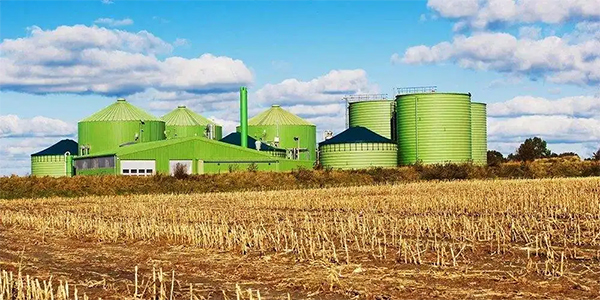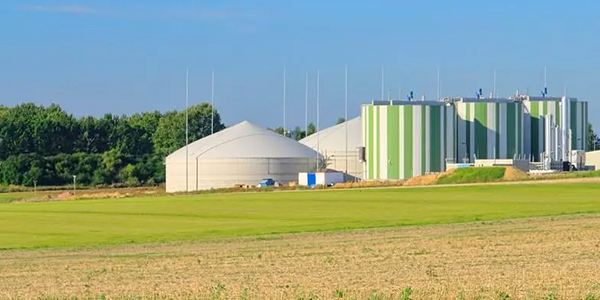After all biomass power plants are put into operation, they have encountered a serious problem, that is, the fuel problem. The problems can be summarized into four points:
1.The fuel purchase was seriously adulterated; a company once stopped production for a month due to fuel quality and price issues, and dismissed all fuel purchase managers on the spot. Because the raw material acquisition mode of biomass power plants is basically that middlemen collect straws by mechanical operations in farmers' fields, or go to agricultural and forestry product processing enterprises to purchase waste materials and send them to power plants. Driven by high profits, suppliers colluded with power plant quality inspectors and acquisition management personnel to refill the fuel with water and sand. This leads to rising fuel costs, unstable combustion of the boiler, increased wear of the heating surface, increased corrosion of the heating surface at the rear, and even damage to the bag of the bag filter, aggravated wear of the induced draft fan impeller, and the need to replace the induced draft fan impeller in the shortest three months. . The ash conveying system exceeded the designed output, and the problems of blockage, ash and wear and tear of the pneumatic ash conveying system continued to appear. The discharge of ash and slag increases, and the cost of ash and slag treatment soars, which directly affects the efficiency of the power plant. This makes the biomass power generation projects that are still in the stage of commercialization exploration and the profitability is not strong.
2.The cost of raw material procurement has increased; as the national policy vigorously promotes the comprehensive utilization of biomass energy, provinces, cities and counties with abundant biomass resources have introduced biomass utilization enterprises to improve the local circular economy, clean energy utilization rate, and employment rate. Drive local economic development. However, disorderly approval and approval have led to overlapping utilization of biomass energy, and the price of biomass raw materials has soared. At present, biomass energy utilization projects include papermaking, biochemical industry, biomass briquette fuel, biomass direct-fired power plants, biomass thermal power plants, bio-oil, biomass-to-gas, bio-fiber fuel ethanol, biomass butanol, xylitol, fermentation Biogas, animal husbandry, edible fungi, etc. Among them, the added value is much higher, which leads to the high level of biomass raw materials, which makes the procurement cost of raw materials for biomass utilization enterprises increase sharply. The biomass power plant itself is due to the cost

High cost, complex equipment, and large labor volume lead to higher financial costs, production costs, and labor costs, and the competitiveness in raw material procurement is relatively weak. Fortunately, the biomass direct-fired boiler equipment has strong adaptability and can eat anything. The fuels with high ash content, high moisture content and relatively cheap price basically all enter the biomass direct-fired power plant to generate electricity.
3.Difficulty in collection; at present, China's agriculture is basically divided into households, and there is no business model of large farms. The harvesting mode is basically mechanical operation, semi-manual operation and other modes, and the country has a policy of encouraging the return of straw to the field in the past few years. At the same time as mechanical harvesting, the straw is basically broken and returned to the field, and small pieces of land are harvested manually. Collection, manual collection and other methods are costly. Due to the low purchase price of straw, many farmers would rather directly ignite the straw in the field and not collect it. At present, biomass utilization enterprises are basically selected in forest product processing agglomeration areas. Forestry residues such as bark, roots, branches, sawdust, etc., and biomass materials such as peanut husks, rice husks, and corncobs, which are easy to collect, can be scaled, and the transportation cost is relatively low. It is the preferred raw material for biomass utilization enterprises. However, such biomass materials are relatively few, and most straw biomass materials have not been comprehensively utilized.
4.The transportation cost of biomass raw materials is high; the density of biomass materials is low, the natural form is loose, the bulk density after collection is not more than 0.1-0.2t/m3, and the stacking storage area is large, resulting in collection, storage, loading and unloading, transportation. Fees rise. According to experience, the general straw biomass fuel collection radius is not easy to exceed 150 kilometers.

Combining the above four points, through the different ways of dealing with various problems of various enterprises, there are four aspects:
1.Start from the source, send a special person to the raw material base to supervise the shipment, and record the video throughout the process to avoid intermediaries interfering with fakes.
2.Formulate quality inspection procedures and standards, increase inspection links, and avoid corruption of quality inspectors.
3.Send reliable people to focus on quality. This method is "one husband is in charge, and all corruption is submerged".
(Only suitable for individual enterprises, their own family controls the quality of incoming raw materials.)
4.Make alliances with surrounding biomass utilization enterprises, improve enterprise quality inspection standards, reduce competition, avoid suppliers from taking advantage of loopholes, and reduce purchase prices. Thereby controlling the price of raw materials.
5.Do a good job in anti-corruption work, and regularly change positions, transfer positions, and exchange important personnel in the quality inspection and acquisition links to reduce the probability of personnel being corroded. Improve anti-corrosion efforts through publicity, unannounced visits, reporting, mutual investigation and mutual investigation.
6.Do market research in advance, organize personnel to estimate the cost of local biomass material collection, and set the purchase price with the cost plus reasonable profit as the guide price.
7.Lead agricultural machinery manufacturers to join forces with agricultural cooperative organizations, and use professional agricultural machinery and straw harvesting machinery for joint operations to implement high-level mechanized operations. Reduce straw collection costs. The above points are the measures taken by various enterprises according to different situations. In fact, according to the current economic and social benefits of biomass materials, social benefits should be given priority, and the utilization of biomass energy is a complex systematic project, not achieved overnight. In solving the key bottleneck problem of straw collection, we cannot rely solely on the economy, and the government should play a leading role. Farmers are encouraged to collect straw for reuse, and the policy subsidy per mu of land is linked to the amount of straw handed over to increase farmers' enthusiasm. This avoids the occurrence of environmental pollution problems such as straw burning and discarding.
In order to form a large-scale and industrialized biomass energy utilization, it is necessary to ensure the supply of raw materials to meet its characteristics of continuous balance, scale and standardization. The collection of biomass raw materials must be large-scale, specialized, and mechanized, and appropriate collection technologies must be adopted to establish a reasonable, efficient, and low-cost collection, storage and transportation system. Conceptually, it cannot be measured by economic value, but must be viewed from a long-term perspective, focusing on reducing pollution and social benefits. Government policy support and related technological progress are of great significance. The government should play a leading role in this work to promote faster and better development of the comprehensive utilization of biomass energy.